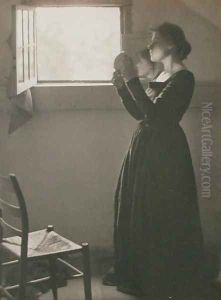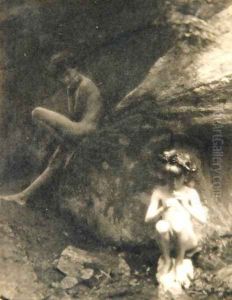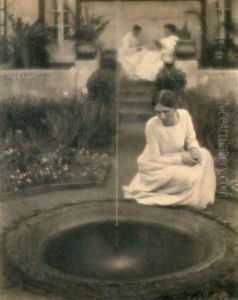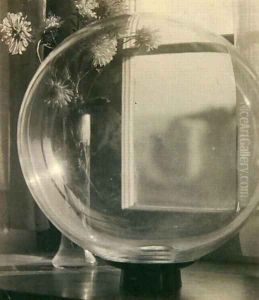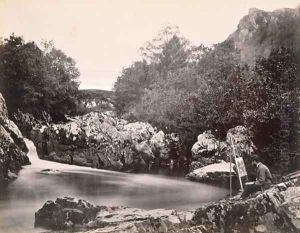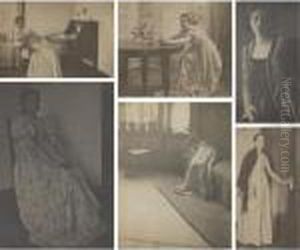Clarence Henry White Paintings
Clarence Hudson White was an influential American photographer and a founding member of the Photo-Secession movement, which sought to elevate photography as a fine art form alongside painting and sculpture. Born on April 8, 1871, in West Carlisle, Ohio, White grew up in a rural setting, which would later influence the pastoral and idyllic themes prevalent in his work. Initially, he pursued a career in bookkeeping, but his passion for photography, sparked in his late teens, eventually led him to dedicate his life to the art form.
White's early work was characterized by its use of natural light, soft focus, and its emphasis on simple, domestic scenes. This stood in contrast to the prevailing trend of commercial and portrait photography of the day, which often employed more rigid, formal compositions. His photographs were noted for their ethereal quality and their ability to capture the beauty in everyday moments, a trait that earned him critical acclaim and the attention of Alfred Stieglitz, another key figure in the movement to recognize photography as a fine art.
In 1902, White was a founding member of the Photo-Secession, an influential group of photographers led by Stieglitz that included Edward Steichen, Gertrude Käsebier, and Alvin Langdon Coburn, among others. The group's aim was to break away from the traditional constraints of photography and to promote it as a means of personal artistic expression. White's contributions to the group's exhibitions and its publication, Camera Work, were instrumental in shaping the early development of art photography in America.
Beyond his work as a photographer, Clarence H. White was also a passionate educator. In 1914, he founded the Clarence H. White School of Photography in New York City, one of the first educational institutions in America dedicated to teaching photography as an art form. His teaching philosophy emphasized the importance of personal vision and creativity over technical prowess, and his school attracted students from across the country and around the world.
White's influence on the field of photography extended beyond his own images and the Photo-Secession movement. Through his teaching and mentorship, he helped to shape the next generation of photographers, including Margaret Bourke-White, Dorothea Lange, and Paul Outerbridge. His legacy is not only in the beautiful images he created but also in his contribution to the recognition of photography as a legitimate and vital art form.
Clarence H. White's life came to an untimely end on July 7, 1925, when he died of a heart attack while on a photo shoot in Mexico. Despite his relatively short life, his impact on the world of photography and art education was profound and enduring. Today, his work is celebrated for its pioneering approach to pictorialism and its lasting influence on the art of photography.
